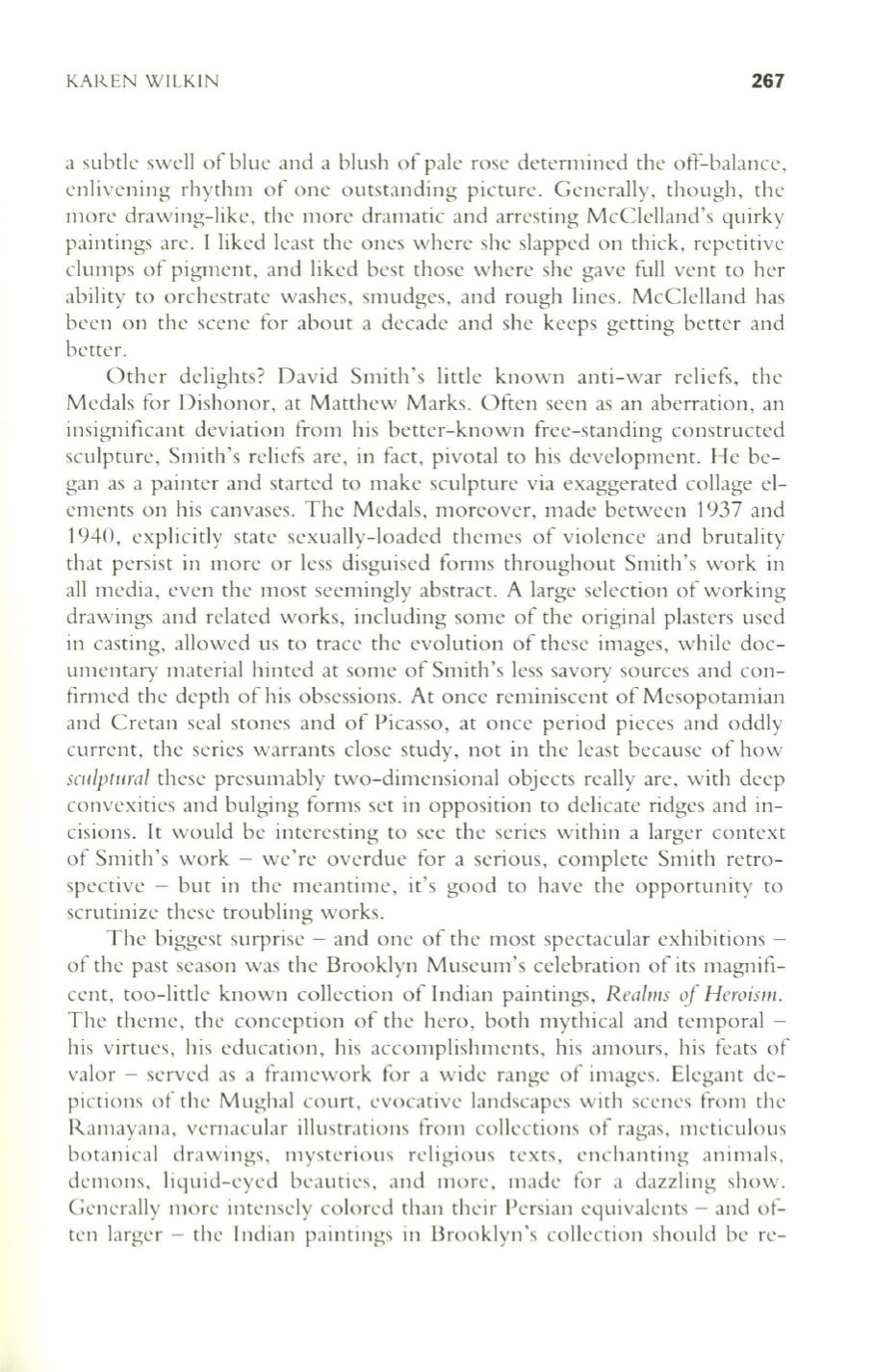
KAI~EN
WILKIN
267
a subtle swell of blue and a blush of pale rose determined the ofT-balance,
enlivening rhythm of one outstanding picture. Generally, though , the
more drawing-like, the more dramatic and arresting McClelland's quirky
paintings are. I liked least the ones where she slapped on thick, repetitive
clumps of pigment, and liked best those where she gave full vent to her
ability to orchestrate washes, smudges, and rough lines. McClelland has
been on the scene for about a decade and she keeps getting better and
better.
Other delights? David Smith's little known anti-war reliefs, the
Medals for Dishonor, at Matthew Marks. Often seen as an aberration, an
insignificant deviation from his better-known free-standing constructed
sculpture, Smith's
relief~
are, in fact, pivotal to his development. He be–
gan as a painter and started to make sculpture via exaggerated collage el–
ements on his canvases. The Medals, moreover, made between 1937 and
1940, explicitly state sexually-loaded themes of violence and brutality
that persist in more or less disguised forms throughout Smith's work in
all media, even the most seemingly abstract. A large selection of working
drawings and related works, including some of the original plasters used
in casting, allowed us to trace the evolution of these images, while doc–
umentary material hinted at some of Smith's less savory sources and con–
firmed the depth of his obsessions. At once reminiscent of Mesopotamian
and Cretan seal stones and of Picasso, at once period pieces and oddly
current, the series warrants close study, not in the least because of how
sw /ptllra/
these presumably two-dimensional objects really are, with deep
convexities and bulging forms set in opposition to delicate ridges and in–
cisions.
It
would be interesting to see the series within a larger context
of Smith's work - we're overdue for a serious, complete Smith retro–
spective - but in the meantime, it's good to have the opportunity to
scrutinize these troubling works.
The biggest surprise - and one of the most spectacular exhibitions -
of the past season was the Brooklyn Museum's celebration of its magnifi–
cent, too-little known collection of Indian paintings,
Rea/illS oj HeroislIl .
The theme, the conception of the hero, both mythical and temporal -
his virtues, his education, his accomplishments, his amours, his feats of
valor - served as a framework for a wide range of images. Elegant de–
pictions of the M ughal court, evocative landscapes with scenes from the
Ramayana, vernacular illustrations frolll collections of ragas, meticulous
botanical drawings, mysterious religious texts, enchanting animals,
demons, liquid-eyed beauties, and more, made for a dazzling show.
Generally more intensely colored than their Persian equivalents - and of–
ten larger - the Indian paintings in Brooklyn's collection should be re-


